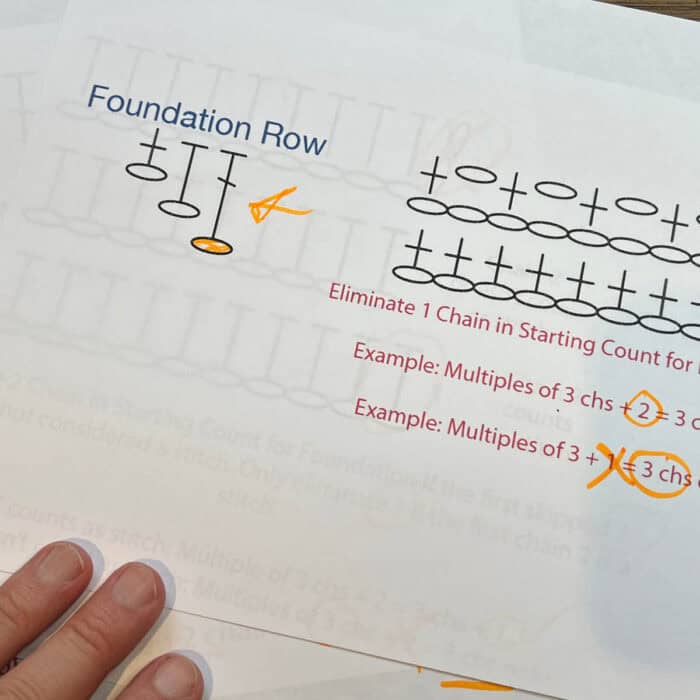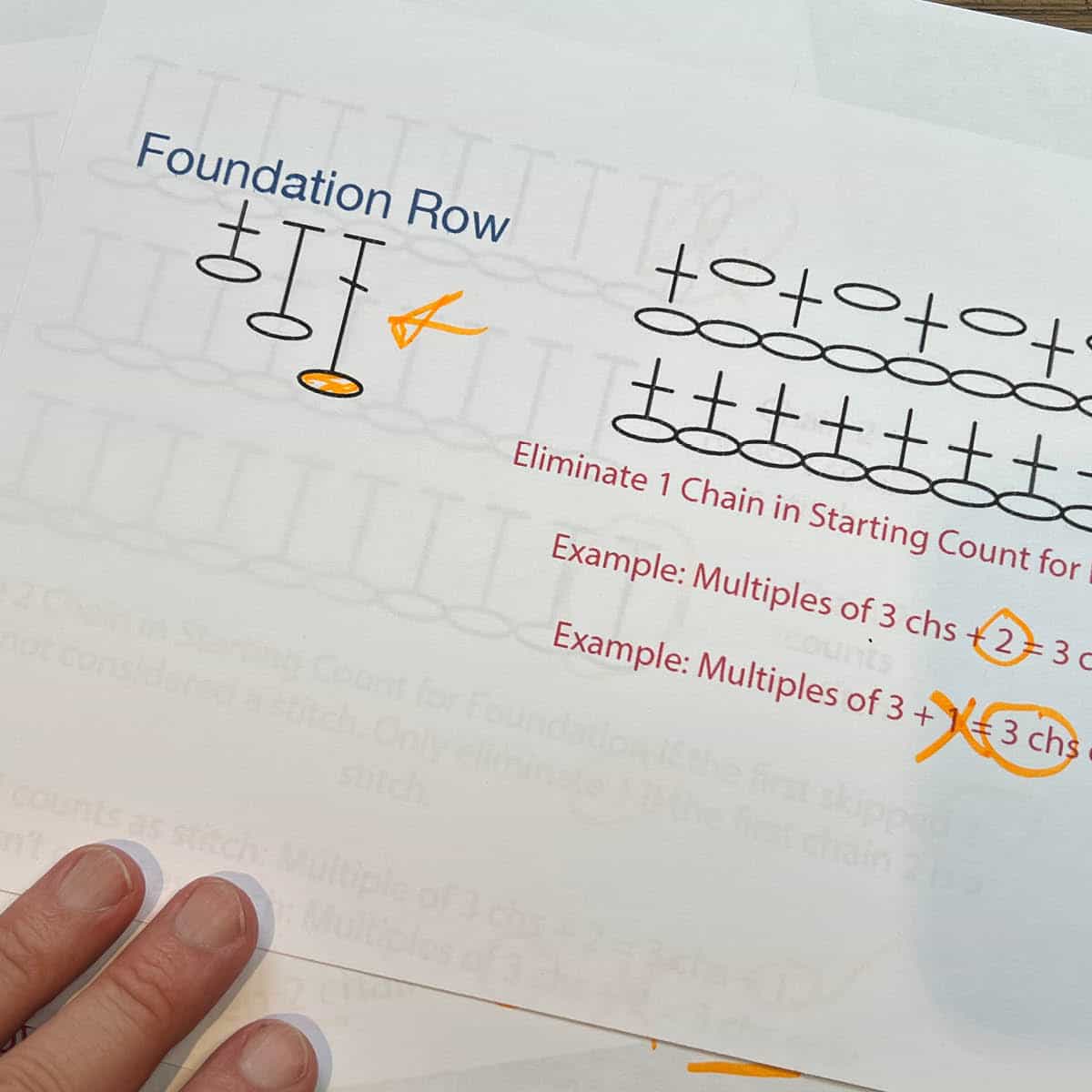Many clothing patterns require you to start with a foundation row instead. This means that you won't be making a chain but building the stitches as real stitches for the first row.
Due to foundation instructions eliminating out the turning chains on the first row, it changes the stitch counts.

Crochet Diagrams
The symbol, as shown in the tutorial and picture above is the normal single crochet, half double crochet or double crochet with the stitch connected to the chain below.
Single Crochet
You will eliminate just one chain from the starting chain count as you don't need the turning chain.
If there is a multiple like 3 chs + 2. It would be 3 chs + 1 only. If you had multiples of 3 chs + 1, you would just have a multiple of 3 only.
Half Double Crochet
If the first chain 2 doesn't count as a stitch, you will eliminate 2 chains from the starting chain.
If the first chain 2 counts as a stitch, you will eliminate just 1 chain from the starting chain.
Example of multiples of 3 chs + 2.
If chain 2 doesn't count as stitch = Multiples of 3 chs only.
If chain 2 counts as stitch = Multiples of 3 chs + 1 only.
Double Crochet
Double crochet usually goes to the 4th chain from the hook. For this, you need to eliminate two from the starting chain count to keep that turning chain as a stitch.
Example of Multiples of 3 chs + 2.
You would just do multiples of 3 chs only.
Suppose you had another example of multiples of 3 + 1. You still need to eliminate out 2 chains. You need to change it to multiples of 3 chs + 2. You have to subtract the + 1 plus subtract one stitch from the previous multiple. = 3 chs + 2 instead.
Tutorial Walk-Through of Changes
Foundation Stitches


Leave me your thoughts...